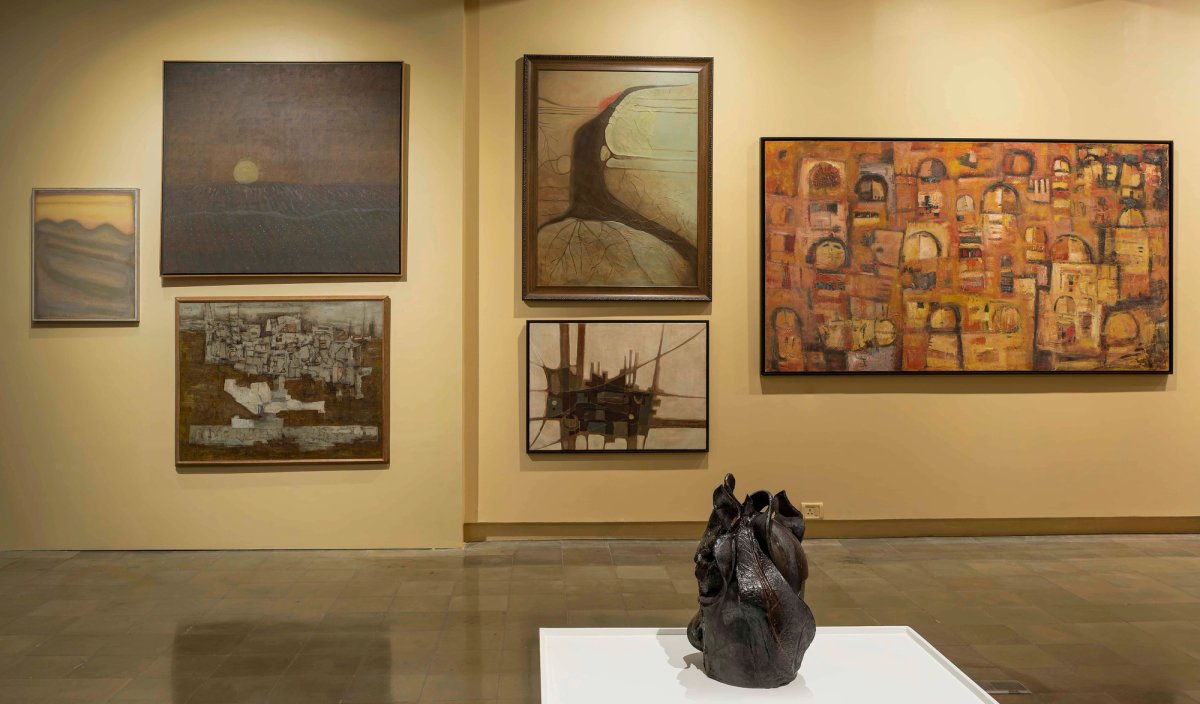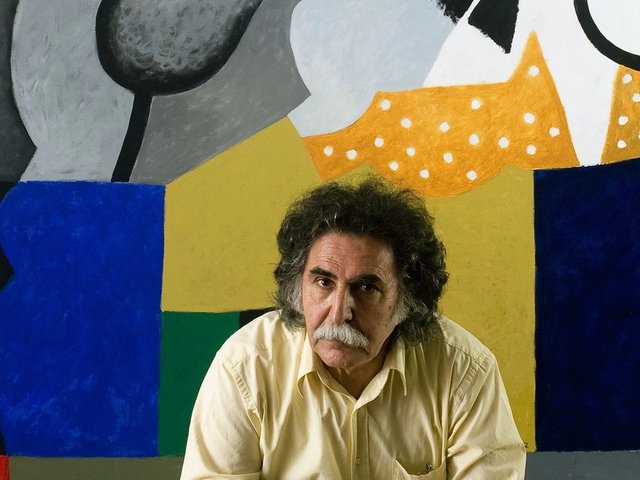A newly opened Mumbai exhibition claims to be the first to focus on the relationship between Indian and Arab modernism. The Sharjah-based Barjeel Art Foundation has lent more than 40 works to the exhibition Resonant Histories (until 16 February 2026) at Mumbai’s Chhatrapati Shivaji Maharaj Vastu Sangrahalaya (CSMVS) museum, bringing together its collection of Arab art with Indian works from the city’s Jehangir Nicholson Art Foundation (JNAF).
The show’s curation is designed to bring out previously unrecognised visual resonances between Indian and Arab artists, who rode the same aesthetic and ideological currents in the shadow of empire. The mesmerising, mountainous faces of the Syrian painter Marwan Kassab-Bachi, for instance, grope independently towards the same undefinable truth as the ghostly heads of the celebrated Bombay master Francis Newton Souza.
But the resonances go beyond the visual. In the exhibition’s opening display, Visions of Freedom, artists and intellectuals grapple with the darker side of liberation in a world partitioned by colonial powers. Bold black drawings by the socialist painter Chittroprasad Bhattacharya depict the new citizens of independent India dying of hunger on streets paved with the riches of empire.
Meanwhile, a taught, brooding canvas, in green oil so dark it could be black, depicts the bloody 1971 Indo-Pakistan war. It is the work of the Indian artist Krishen Khanna, who grew up in what is now Pakistan, and celebrated his 100th birthday in New Delhi this year. A centenary exhibition of his work is currently on show nearby, at the National Gallery of Modern Art (NGMA) Mumbai.
These works are placed in dialogue with paintings like Waiting, a 1970 canvas by the Syrian painter Abdul Qader Al Rais, which depicts the suspended lives of some of the Middle East’s millions of perpetual refugees. And Al Fiddaiyoun (1969) by the Syrian artist Naim Ismail, in which the keffiyehs of Palestinian guerrillas form geometric flares on the canvas. As the Barjeel’s curator Suheyla Takesh points out, these works are just as relevant today.
The exhibition also hints at direct cultural exchange between artists from vastly different backgrounds. For instance, in the cultural hinterland of the Non-Aligned Movement—founded during the collapse of the colonial system to address the independence struggles of the peoples of Africa, Asia and beyond—Arab artists would travel to India, where they would drink in the aesthetics of the subcontinent. This led to works like The Lotus Girl (1955), in which the Egyptian artist Nazek Hamdi adapts the visual language of Bengali folk-art.
“We put works from the Bengal School next to Hamdi, because the look and subject matter are strikingly similar,” says JNAF's director, Puja Vaish. “We wanted to create an art historical discourse through this exhibition.”
However, at the beginning, Vaish explains, there wasn’t much material to build on. “So we see this exhibition as a starting point for further research. This is how a lot of art history or collections are built—you give a single example and that opens up a gateway for more work to be done. We hope that is the sort of synergy that will be created.”
Overall, Resonant Histories makes a strong start in creating this synergy. However, a truly regional exhibition will have to engage with works by South Asian artists from outside of India. Ismail’s 1969 Al Fiddaiyoun, for instance, could be hung next to works from the same year by the Pakistani and Bangladeshi artist Zainul Abedin, who toured Palestine, Syria, and Jordan at the invitation of the Arab League.
The watercolour sketches of Abedin’s Freedom Fighter series depict the same raw dynamism, with figures and shapes acting out liberation on the page. Abedin went on to use the same visual vocabulary he had perfected in Palestine in his native Bengal, which by this time had spawned a liberation struggle of its own—a reminder that, in post-colonial societies, it is not just the art that resonates.
- Resonant Histories, CSMVS museum, Mumbai, until 16 February 2026




